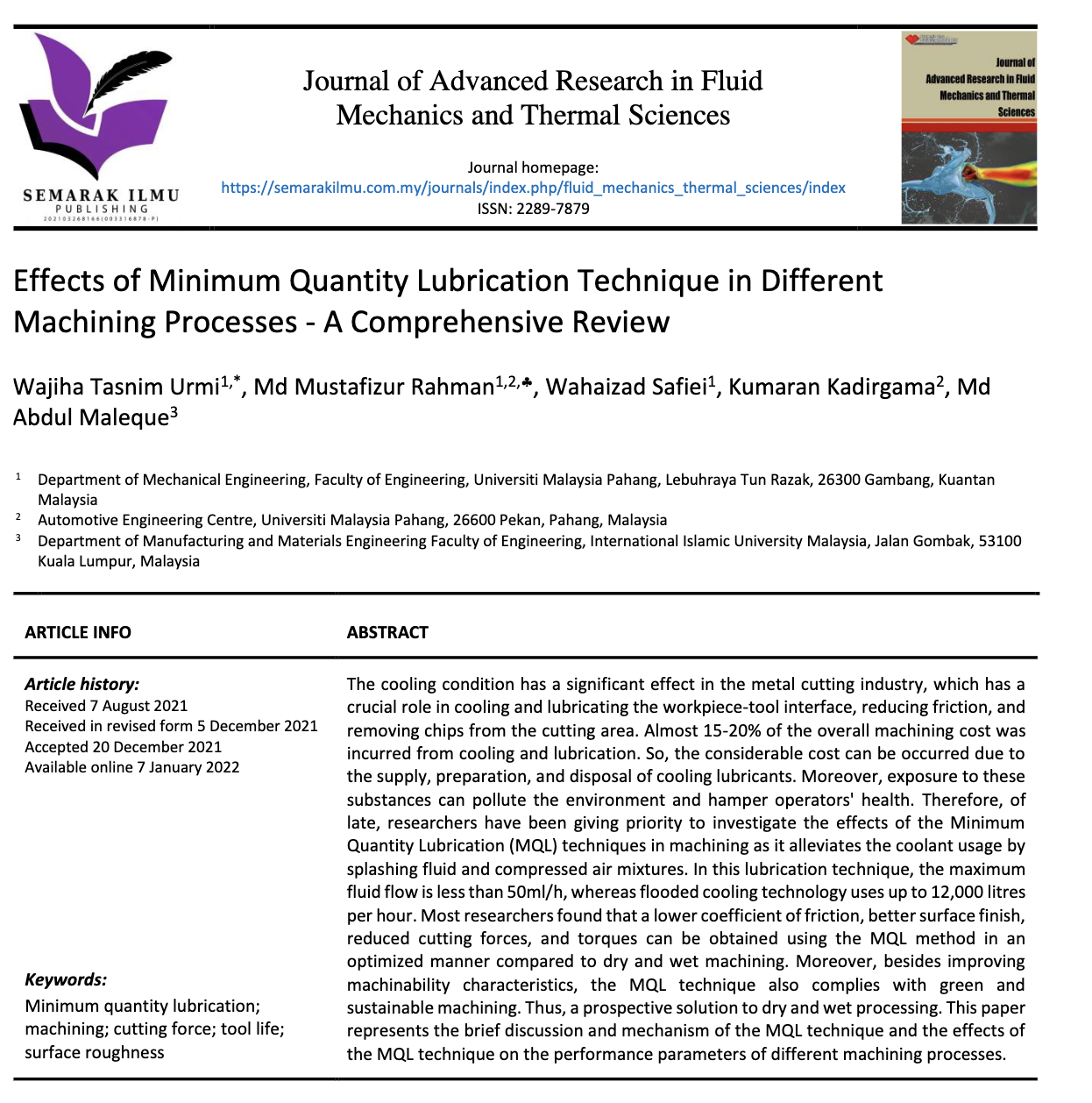Effects of Minimum Quantity Lubrication Technique in Different Machining Processes - A Comprehensive Review
DOI:
https://doi.org/10.37934/arfmts.90.2.135159Keywords:
Minimum quantity lubrication, machining, cutting force, tool life, surface roughnessAbstract
The cooling condition has a significant effect in the metal cutting industry, which has a crucial role in cooling and lubricating the workpiece-tool interface, reducing friction, and removing chips from the cutting area. Almost 15-20% of the overall machining cost was incurred from cooling and lubrication. So, the considerable cost can be occurred due to the supply, preparation, and disposal of cooling lubricants. Moreover, exposure to these substances can pollute the environment and hamper operators' health. Therefore, of late, researchers have been giving priority to investigate the effects of the Minimum Quantity Lubrication (MQL) techniques in machining as it alleviates the coolant usage by splashing fluid and compressed air mixtures. In this lubrication technique, the maximum fluid flow is less than 50ml/h, whereas flooded cooling technology uses up to 12,000 litres per hour. Most researchers found that a lower coefficient of friction, better surface finish, reduced cutting forces, and torques can be obtained using the MQL method in an optimized manner compared to dry and wet machining. Moreover, besides improving machinability characteristics, the MQL technique also complies with green and sustainable machining. Thus, a prospective solution to dry and wet processing. This paper represents the brief discussion and mechanism of the MQL technique and the effects of the MQL technique on the performance parameters of different machining processes.
Downloads






























